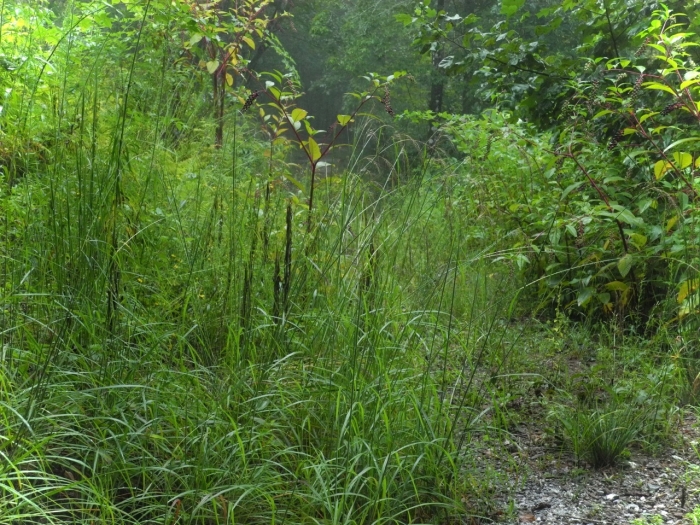Slender Bluestem
(Sorghastrum elliottii)
Slender Bluestem (Sorghastrum elliottii)
/
/

Michael J. Papay
CC BY 4.0
Image By:
Michael J. Papay
Recorded By:
Copyright:
CC BY 4.0
Copyright Notice:
Photo by: Michael J. Papay | License Type: CC BY 4.0 | License URL: http://creativecommons.org/licenses/by/4.0/ | Rights Holder: Michael J. Papay | Publisher: iNaturalist | Date Created: 2021-08-18T07:37:56-07:00 |

























Estimated Native Range
Summary
Sorghastrum elliottii, commonly known as Slender Bluestem, is a perennial grass native to the southeastern United States, particularly thriving in dry, open woods, pine barrens, and savannas. It typically grows up to 1.5 meters tall and is noted for its fine-textured, blue-green foliage that turns a striking golden color in the fall. The plant produces fluffy, silver-white seed heads that persist into winter, adding visual interest to the landscape. Slender Bluestem is particularly showy in mass plantings where its fall coloration and seed heads can be appreciated.
Slender Bluestem is valued for its ornamental appeal in naturalistic landscapes, restoration projects, and as an accent in gardens. It is adaptable to a range of soil types, from sandy to clay, provided they are well-drained. This grass prefers full sun but can tolerate light shade. It is drought-tolerant once established, making it a low-maintenance option for gardeners. While it is not commonly afflicted by diseases or pests, rust can occasionally be a problem. Slender Bluestem is not known for aggressive roots or invasiveness, making it a safe choice for various garden settings.CC BY-SA 4.0
Slender Bluestem is valued for its ornamental appeal in naturalistic landscapes, restoration projects, and as an accent in gardens. It is adaptable to a range of soil types, from sandy to clay, provided they are well-drained. This grass prefers full sun but can tolerate light shade. It is drought-tolerant once established, making it a low-maintenance option for gardeners. While it is not commonly afflicted by diseases or pests, rust can occasionally be a problem. Slender Bluestem is not known for aggressive roots or invasiveness, making it a safe choice for various garden settings.CC BY-SA 4.0
Plant Description
- Plant Type: Grass
- Height: 4-6 feet
- Width: 1-3 feet
- Growth Rate: Rapid
- Flower Color: N/A
- Flowering Season: Fall
- Leaf Retention: Deciduous
Growth Requirements
- Sun: Full Sun
- Water: Medium
- Drainage: Medium
Common Uses
Drought Tolerant, Erosion Control, Low Maintenance
Natural Habitat
Native to dry, open woods, pine barrens, and savannas in the southeastern United States
Other Names
Common Names: Elliott’s Indian Grass
Scientific Names: , Sorghastrum elliottii, Andropogon nutans, Chrysopogon elliottii, Sorghastrum apalachicolense,
GBIF Accepted Name: